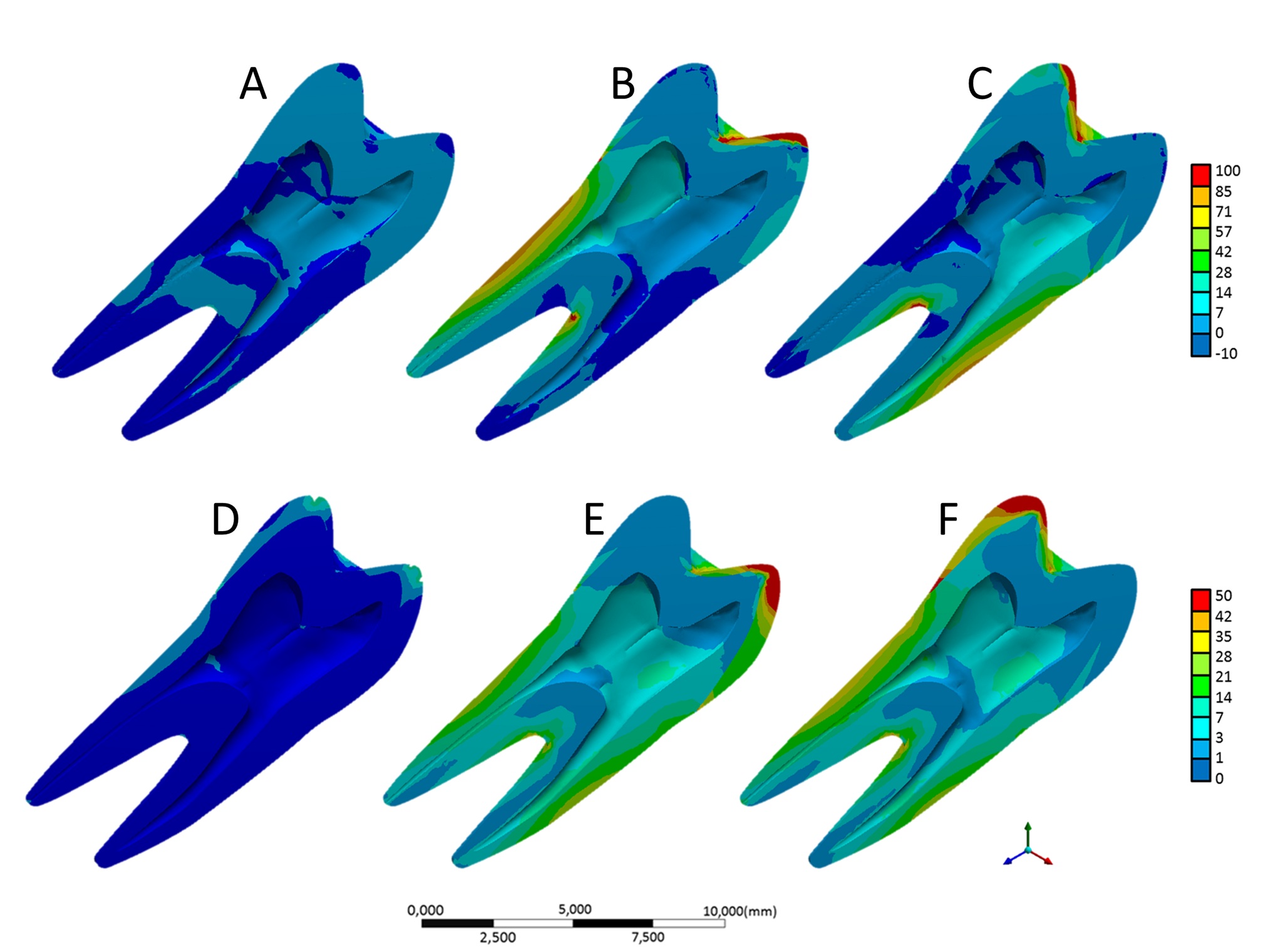Influence of the occlusal contacts in formation of Abfraction Lesions in the upper premolar
DOI:
https://doi.org/10.14295/bds.2017.v20i4.1484Resumo
Objective: The aim of this study was to observe the influence of different occlusal contacts in a superior pre-molar structure using Finite Element Analysis. Material and Methods: A three-dimensional model of a superior pre-molar was designed to simulate three occlusion situations, namely central occlusion and two types of lateral occlusion contacts. The model presents enamel, dentin, a periodontal ligament and a fixation cylinder separately. All materials were considered isotropic, linear and homogeneous, and the contacts of each structure were perfectly bonded. On analysis software, a load was applied to an occlusal surface at 40° to the long axis on lateral contacts, and directed to the long axis on central occlusion contact. Results: The results were obtained in stress maps and the maximum values were then plotted in table for quantitative comparison, with the enamel concentrating more stress than dentin and the occlusal contact presenting the worst biomechanical behavior. Conclusion: Within the limitations of this study, it is possible conclude that: eccentric contacts have higher potential to develop abfraction lesions on the cervical region of teeth, thus increasing the magnitude of tensile and shear stresses.
Keywords
Finite Elements Analysis, Abfraction; Stress distribution; Occlusion, Premolar.
Downloads

Downloads
Publicado
Como Citar
Edição
Seção
Licença
TRANSFERÊNCIA DE DIREITOS AUTORAIS E DECLARAÇÃO DE RESPONSABILIDADE
Toda a propriedade de direitos autorais do artigo "____________________________________________________________________" é transferido do autor(es) para a CIÊNCIA ODONTOLÓGICA BRASILEIRA, no caso do trabalho ser publicado. O artigo não foi publicado em outro lugar e não foi submetido simultaneamente para publicação em outra revista.
Vimos por meio deste, atestar que trabalho é original e não apresenta dados manipulados, fraude ou plágio. Fizemos contribuição científica significativa para o estudo e estamos cientes dos dados apresentados e de acordo com a versão final do artigo. Assumimos total responsabilidade pelos aspectos éticos do estudo.
Este texto deve ser impresso e assinado por todos os autores. A versão digitalizada deverá ser apresentada como arquivo suplementar durante o processo de submissão.



























